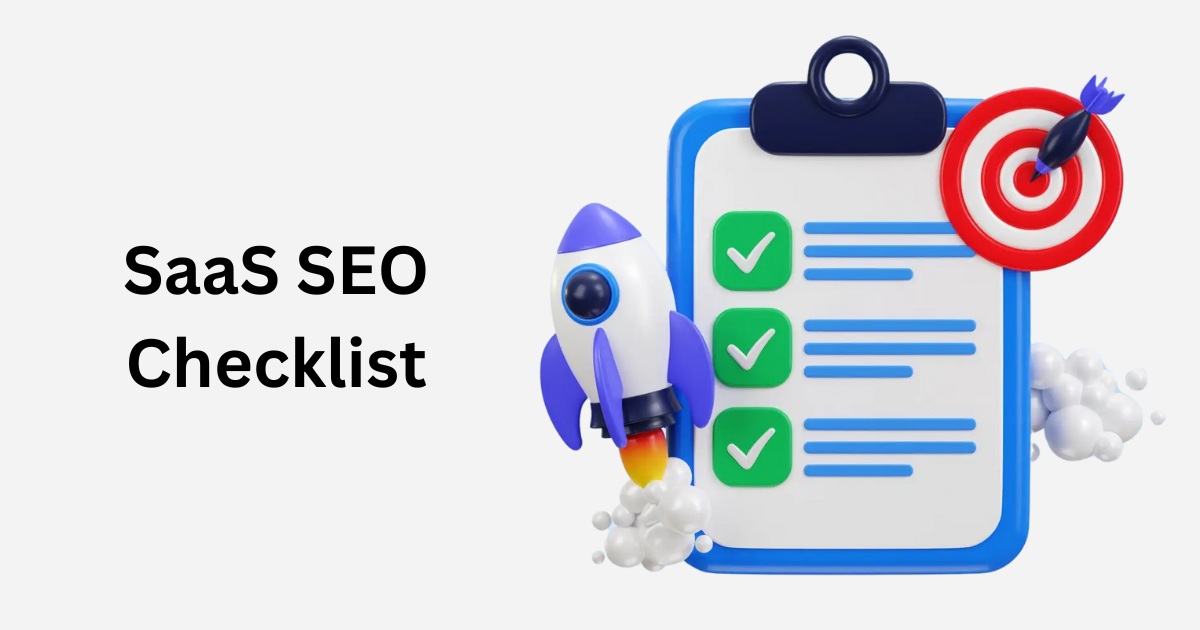As a SaaS company, driving organic traffic to your website is important for sustainable growth and attracting potential customers.
However, with the constantly evolving landscape of search engine optimization (SEO), it can be challenging to know where to focus your efforts. That’s where a comprehensive SaaS SEO checklist comes in handy.
At VH-info, we understand the unique challenges and opportunities that come with optimizing a SaaS website for search engines.
Our team of experienced SEO experts has compiled the ultimate SaaS SEO checklist to help you boost your online visibility and drive more qualified leads to your site.
What is a SaaS SEO Checklist?
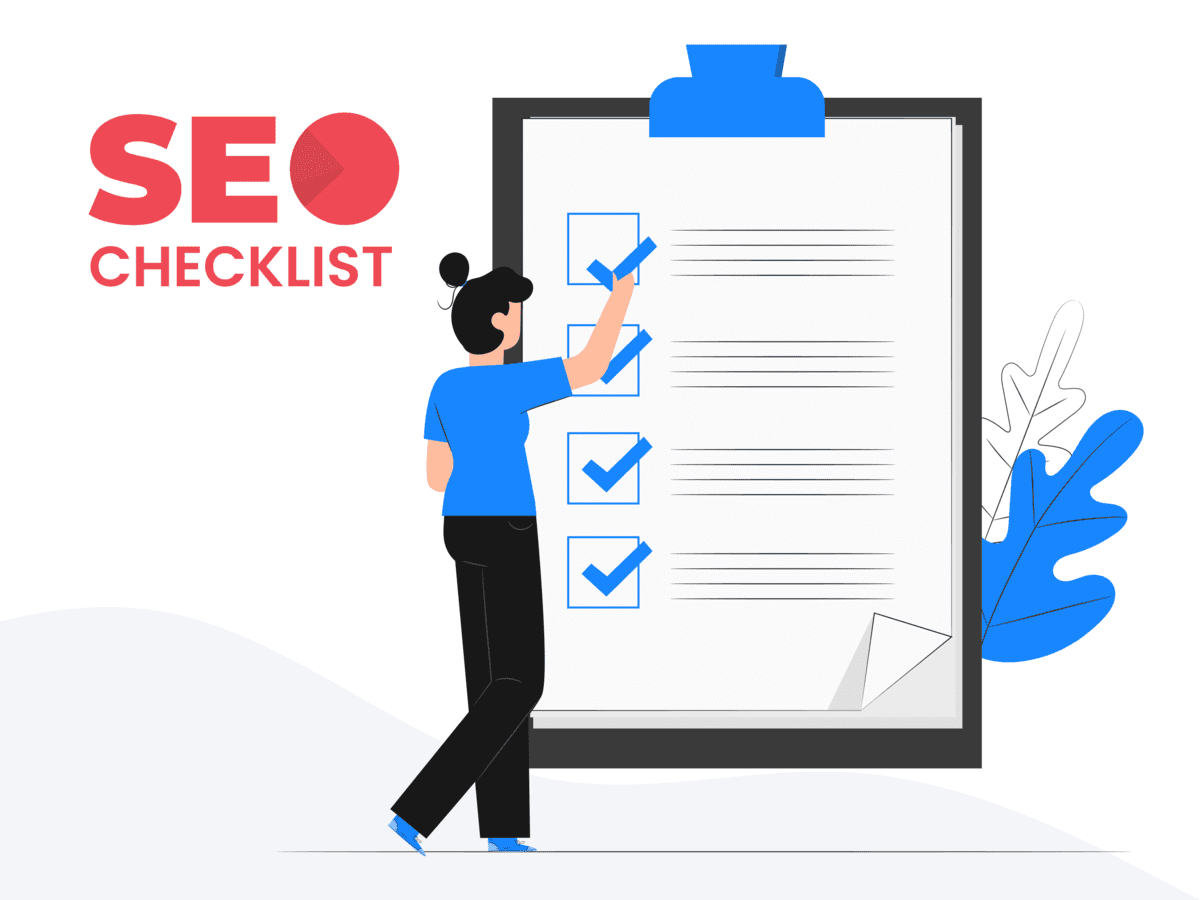
A SaaS SEO checklist is a structured list of essential elements and best practices that SaaS companies should follow to optimize their websites for search engines. This checklist covers various aspects of SEO, including keyword research, on-page optimization, technical SEO, content creation, and link building.
How is SaaS SEO Different From Traditional SEO?
While the fundamental principles of SEO apply to both SaaS and traditional websites, there are some key differences to consider:
- Focus on product-related keywords: SaaS companies should prioritize keywords that relate directly to their product page features, benefits, and use cases.
- Emphasis on user experience: SaaS websites must provide a seamless user experience to encourage free trial sign-ups and conversions.
- Importance of content marketing: Creating valuable, informative content is essential for attracting and engaging potential customers in the SaaS industry.
Importance of a Checklist For SaaS SEO

Having a well-defined SaaS SEO checklist is essential for several reasons:
- Ensures consistency: A checklist helps maintain consistency in your SEO efforts across all pages and content on your website.
- Saves time and resources: By following a structured checklist, you can streamline your SEO process and avoid wasting time on ineffective tactics.
- Measurable results: A comprehensive checklist allows you to track your progress and measure the impact of your SEO efforts on organic traffic and conversions.
What Should Your SaaS SEO Checklist Include?

A complete SaaS SEO checklist should cover the following key areas:
- High Quality Content: Creating original, informative, and engaging content is important for attracting and retaining your target audience. Your content should address the pain points and needs of your ideal customer while including relevant keywords naturally.
- Backlinks: Building high-quality backlinks from authoritative websites is essential for improving your domain authority and search engine rankings. Focus on creating valuable content that other sites will want to link to organically.
- A Fast Website: Website speed is a critical factor in both user experience and search engine rankings. Optimize your SaaS website for fast loading times by minimizing code, compressing images, and leveraging caching techniques.
- Internal Linking: Implementing a strategic internal linking structure helps search engines understand your website’s hierarchy and distributes link equity throughout your pages. Use descriptive anchor text and link to relevant, high-value pages.
- Competitor Analysis: Regularly analyze your competitors’ SEO strategies, including their keyword targeting, content creation, and link building efforts. Identify gaps and opportunities to differentiate your SaaS website and outperform your rivals.
- Landing Pages That Convert: Create dedicated landing pages for each of your main product features or use cases. Optimize these pages for relevant keywords, include clear calls-to-action (CTAs), and design them to encourage conversions.
The Ultimate SaaS SEO Checklist
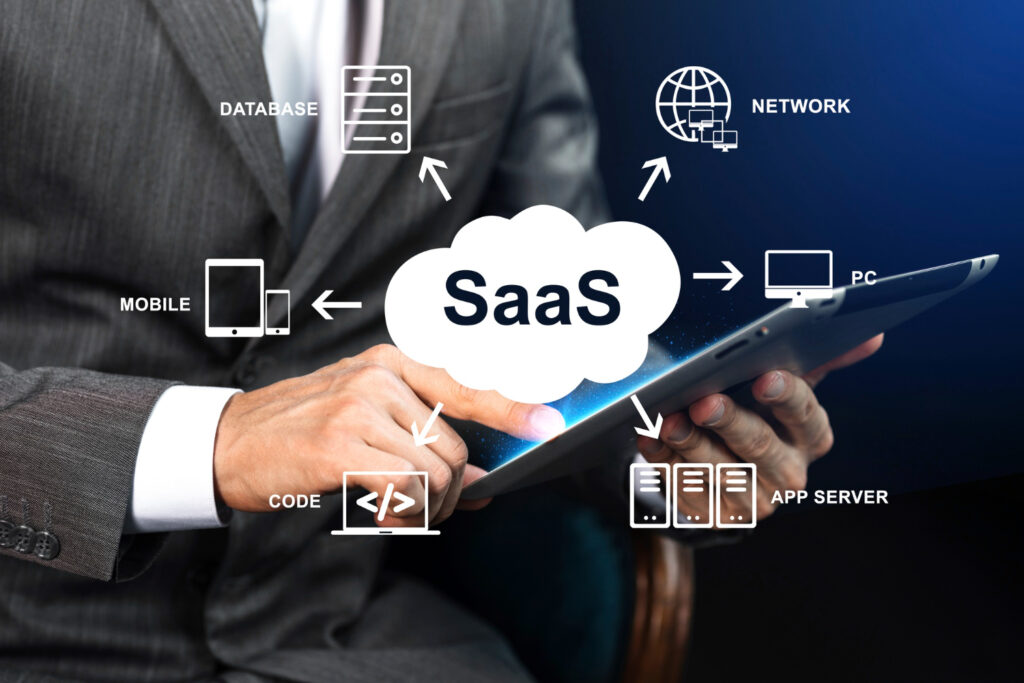
Now that we’ve covered the essential components of a SaaS SEO checklist, let’s dive into the specific steps you should follow to optimize your website for search engines.
Conduct Thorough Keyword Research
Keyword research is the foundation of any successful & a solid SEO strategy. Identify the search terms your target audience uses when looking for solutions like yours, and prioritize those keywords based on relevance, search volume, and competition level.
Types of Keywords For SaaS SEO
- Informational keywords: These keywords relate to general information about your product, industry, or target audience’s pain points (e.g., “what is customer relationship management”).
- Transactional keywords: These keywords indicate a user’s intent to take action, such as signing up for a free trial or purchasing a subscription (e.g., “best CRM software for small businesses”).
Optimize Your URLs For SEO
Use short, descriptive, and keyword-rich URLs for your web pages. Avoid using special characters, underscores, or excessive parameters in your URLs, as these can negatively impact your search engine rankings.
Create Compelling Meta Titles and Descriptions
Creating interesting meta titles and descriptions is very important for getting clicks from search engine results. Think of them as the signs outside your store, inviting people to check out what you have.
Optimizing Meta Titles
Create unique, keyword-rich meta titles for each page on your SaaS website. Keep your titles under 60 characters to ensure they display fully in search results.
Writing Effective Meta Descriptions
Write compelling meta descriptions that accurately summarize your page content and entice users to click through to your site. Aim for descriptions between 50-160 characters, and include your primary keyword.
Use Proper Heading Structure
Using the right heading structure is important for making your content clear and easy to navigate. This is good for both users and search engines. Headings like H1, H2, H3, and so on help break content into smaller parts. This makes it easier to read and understand.
H1 Headings
Use a single, unique H1 heading on each page that includes your main keyword and accurately reflects the content of the page.
H2 and H3 Subheadings
Break up your content into easily digestible sections using H2 and H3 subheadings. Include relevant keywords naturally into these headings to improve readability and SEO.
Create Original, High-Quality Content
Focus on creating original, in-depth content that addresses your target audience’s needs and pain points. Use a mix of content formats, such as blog posts, case studies, whitepapers, and videos, to engage your audience and showcase your expertise.
Ensure Content Readability
Make your content easy to read and scan by using short paragraphs, bullet points, and images. Aim for a readability score of 8th grade or lower to ensure your content is accessible to a wide audience.
Include Internal and External Links
Including links, both internal and external, in your SaaS content can help with SEO and user experience.
Internal Linking Best Practices
Link to relevant, high-value pages within your SaaS website to improve navigation, distribute link equity, and keep visitors engaged. Use descriptive anchor text that accurately reflects the content of the linked page.
External Linking Guidelines
Link to authoritative, relevant websites to provide additional value to your readers and demonstrate your industry knowledge. Avoid linking to low-quality or spammy sites, as this can harm your search engine rankings.
Optimize Images For SEO
Include relevant, high-quality images in your content to break up text and enhance user experience. Optimize your images for SEO by using descriptive file names, alt text, and compressed file sizes.
Include Clear Calls-to-Action (CTAs)
Include clear, compelling CTAs throughout your SaaS website to guide users toward desired actions, such as signing up for a free trial or requesting a demo. Use action-oriented language and prominent placement to maximize conversions.
Implement Schema Markup
Add schema markup to your SaaS website to provide search engines with more context about your content. This structured data can help your site appear in rich snippets, increasing visibility and click-through rates.
Prioritize Mobile-Friendliness
With more users accessing websites on mobile devices, it’s important to ensure your SaaS website is mobile-friendly. Use responsive design, optimized for touch navigation, and ensure fast loading times on mobile networks.
6-Point SaaS SEO Checklist
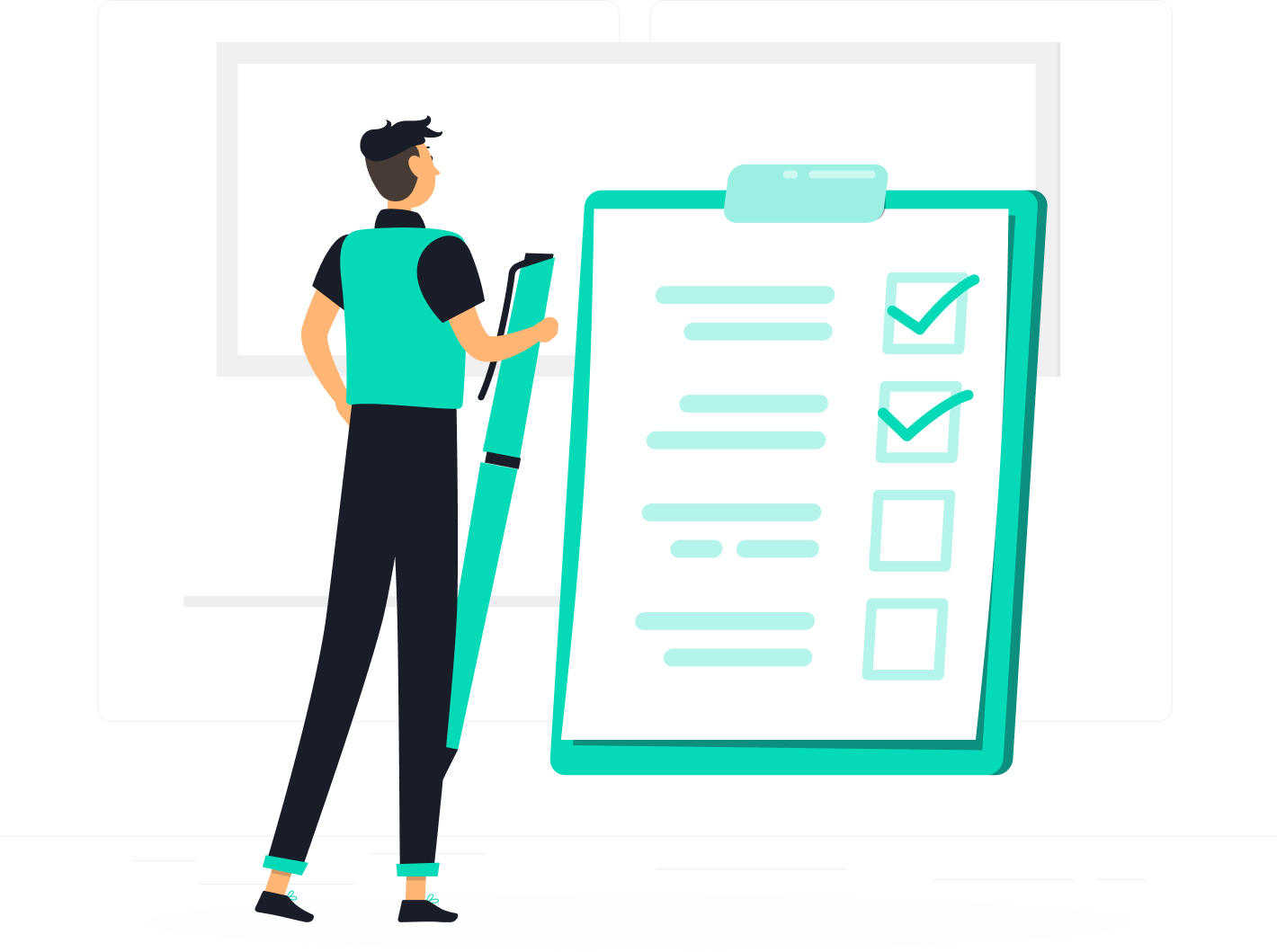
To help you stay organized and focused, we’ve broken down our ultimate SaaS SEO checklist into six key categories:
Basic SaaS SEO Checklist
- Install Google Analytics and Search Console
- Set up a sitemap and robots.txt file
- Ensure your website is mobile-friendly
- Optimize your website’s loading speed
SaaS Keyword Research Checklist
- Identify your target audience and their pain points
- Research industry-specific and product-related keywords
- Analyze competitor keywords and content strategies
- Prioritize keywords based on relevance, search volume, and difficulty
On-Page SEO Checklist
- Optimize URLs, meta titles, and descriptions for each page
- Use proper heading structure (H1, H2, H3)
- Optimize images with descriptive file names and alt text
- Implement schema markup for rich snippets
Content Optimization Checklist
- Create original, high-quality content that addresses user needs
- Include keywords naturally throughout your content
- Ensure content readability with short paragraphs and bullet points
- Include internal and external links to relevant, authoritative sources
Technical SaaS SEO Checklist
- Ensure your website has a clean, crawlable structure
- Implement SSL encryption for secure browsing
- Optimize your website’s loading speed and performance
- Fix any broken links or 404 errors
Off-Page SaaS SEO Checklist
- Build high-quality backlinks from relevant, authoritative websites
- Engage in guest blogging and content partnerships
- Use social media to promote your content and engage your audience
- Monitor and manage your online reputation and brand mentions
What is the Best Way to Know if My SEO Checklist is Working?
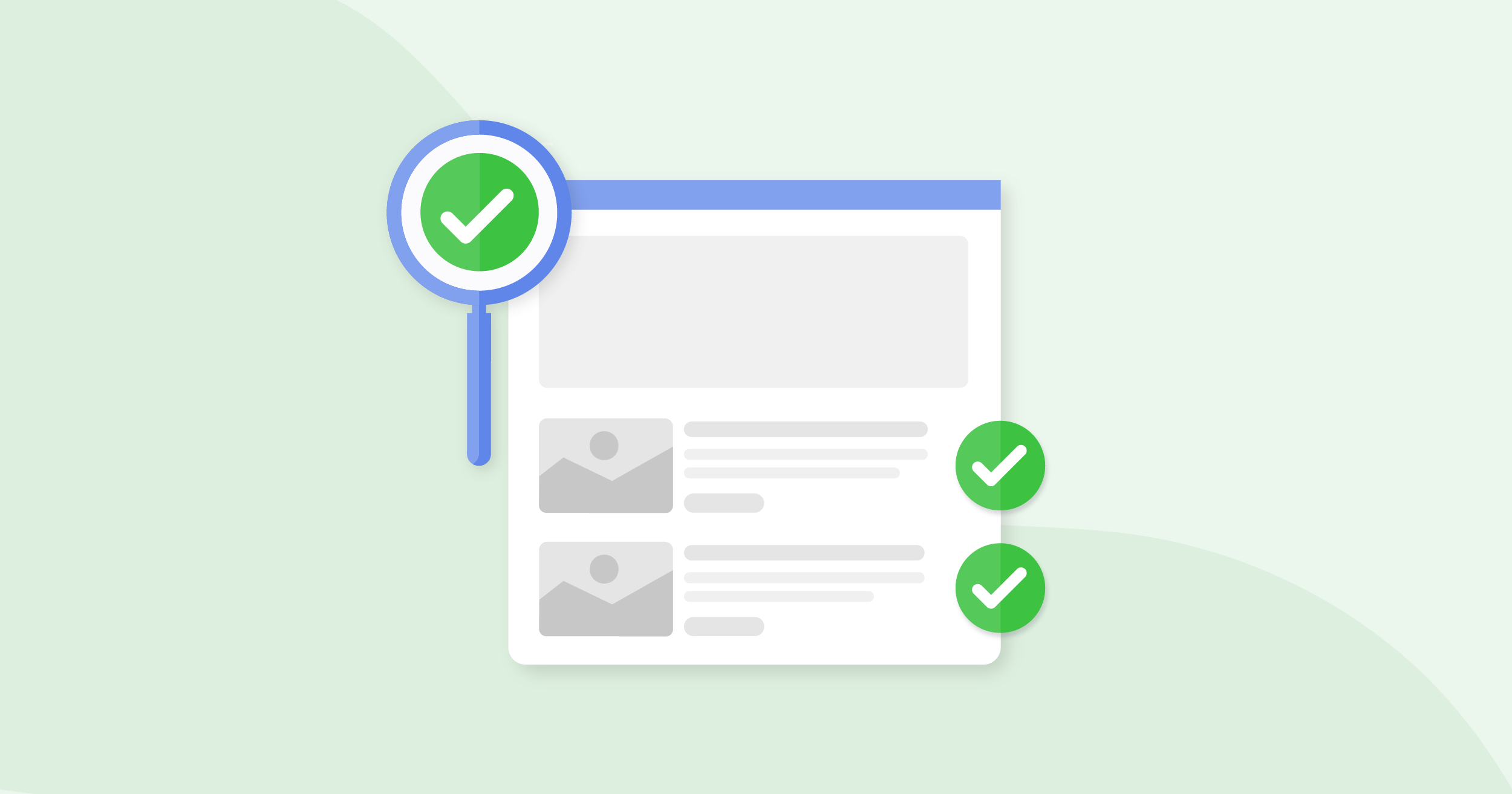
To measure the effectiveness of your SaaS SEO checklist, track the following key performance indicators (KPIs):
- Organic Traffic: Monitor the number of visitors coming to your website from organic search results using tools like Google Analytics.
- Keyword Rankings: Track your website’s rankings for target keywords using tools like Google Search Console or third-party rank tracking software.
- Conversion Rates: Measure the percentage of organic traffic that converts into leads or customers, and track improvements over time.
How Long Does it Take to See Results From SaaS SEO Efforts?

SEO is a long-term strategy, and the time it takes to see results can vary depending on factors such as your industry, competition level, and the current state of your website.
On average, it can take 3-6 months to start seeing significant improvements in organic traffic and keyword rankings.
FAQ’s:
Is the SEO Checklist Different For Every Industry?
While the fundamental principles of SEO remain the same across industries, there may be some variations in the specific tactics and priorities based on your target audience and competition level. However, the core elements of our SaaS SEO checklist are applicable to most industries.
What Are the Most Important On-Page SEO Factors For SaaS Websites?
The most critical on-page SEO factors for SaaS websites include:
- Keyword optimization in URLs, meta titles, descriptions, and headings
- High-quality, relevant content that addresses user needs
- Proper heading structure and content formatting
- Fast loading speed and mobile-friendliness
Can I Use the Same Content For Multiple SaaS Website Pages?
No, it’s essential to create unique, original content for each page on your SaaS website. Duplicate content can negatively impact your search engine rankings and lead to a poor user experience.
Can SaaS Companies Improve SEO Without a Big Budget?
Yes, many aspects of SEO can be implemented without a significant investment, such as keyword research, on-page optimization, and content creation. However, investing in tools, resources, and expertise can help accelerate your results and stay ahead of the competition.
How Does Local SEO Differ For SaaS?
Local SEO is less relevant for most SaaS companies, as their products and services are typically not tied to a specific location. However, if your SaaS business has a local presence or targets customers in specific regions, including local keywords and optimizing for local search can be beneficial.
Conclusion
Implementing a comprehensive SaaS SEO checklist is essential for driving organic traffic, attracting qualified leads, and growing your business in the competitive SaaS landscape.
Focusing on the key areas of keyword research, on-page optimization, content creation, technical SEO, and link building can help improve your search engine rankings and establish your SaaS company as an industry leader.
At VH-info, our team of SaaS SEO experts is dedicated to helping businesses like yours achieve sustainable growth through proven, data-driven strategies. Contact us today to learn more about how we can help you optimize your SaaS website and drive measurable results.

